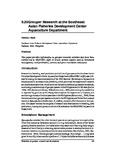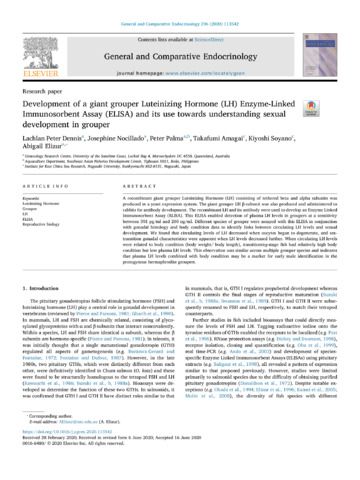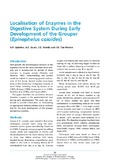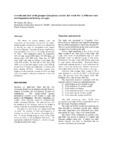Grouper research at the Southeast Asian Fisheries Development Center Aquaculture Department
- Global styles
- MLA
- Vancouver
- Elsevier - Harvard
- APA
- Help

View/
Date
2002Author
Page views
5,306ASFA keyword
AGROVOC keyword
Metadata
Show full item record
Share
Abstract
This paper provides information on grouper research activities that have been carried out in SEAFDEC AQD. It covers various aspects such as broodstock management, seed production, nursery and grow-out culture techniques.
Suggested Citation
Marte, C. L. (2002). Grouper research at the Southeast Asian Fisheries Development Center Aquaculture Department. In Asia-Pacific Economic Cooperation & Network of Aquaculture Centres in Asia-Pacific (Eds.), Report of the APEC/NACA Cooperative Grouper Aquaculture Workshop, Hat Yai, Thailand 7-9 April 1999 (pp. 143-151). Bangkok, Thailand: Network of Aquaculture Centres in Asia-Pacific.
Type
Conference paperCollections
- Conference Proceedings [298]
Related items
Showing items related by title, author, creator and subject.
-
Development of a giant grouper Luteinizing Hormone (LH) Enzyme-Linked Immunosorbent Assay (ELISA) and its use towards understanding sexual development in grouper
Peter Dennis, Lachlan; Nocillado, Josephine; Palma, Peter ; Amagai, Takafumi; Soyano, Kiyoshi; Elizur, Abigail (Elsevier, 2020-07-13)
A recombinant giant grouper Luteinizing Hormone (LH) consisting of tethered beta and alpha subunits was produced in a yeast expression system. The giant grouper LH β-subunit was also produced and administered to rabbits ...
; Amagai, Takafumi; Soyano, Kiyoshi; Elizur, Abigail (Elsevier, 2020-07-13)
A recombinant giant grouper Luteinizing Hormone (LH) consisting of tethered beta and alpha subunits was produced in a yeast expression system. The giant grouper LH β-subunit was also produced and administered to rabbits ... -
Series: ACIAR Monograph 110
Localisation of enzymes in the digestive system during early development of the grouper (Epinephelus coioides)
Quinitio, Gerald F.; Sa-an, Analyn C.; Toledo, Joebert D.; Tan-Fermin, Josefa D. (Australian Centre for International Agricultural Research, 2004)This study was undertaken to investigate the occurrence of some digestive enzymes in the gastrointestinal tract during early development in the grouper. This work was conducted to provide information on formulating an ... -
Growth and yield of the grouper Epinephelus coioides fed 'trash fish' at different rates and frequencies in floating net cages
Galzote, G. V.; Abrera, E. C. (Bureau of Agricultural Research, Department of Agriculture, 2007)The effects of various feeding rates and frequencies on the growth and survival of orangespotted grouper Epinephelus coides were determined in floating net cages in Tiniguiban Cove, Puerto Princesa, Palawan. Juveniles ...




